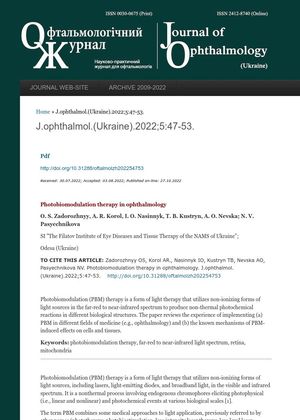Photobiomodulation Therapy in Ophthalmology
October 2022
in “Journal of ophthalmology”

TLDR Light therapy may improve eye conditions by stimulating cell activity and increasing oxygen availability.
Photobiomodulation (PBM) therapy is a type of light therapy that uses non-ionizing light sources in the far-red to near-infrared spectrum to stimulate wound healing, reduce pain, and have neuroprotective effects. It works by acting on mitochondria to increase adenosine triphosphate (ATP) production, modulate reactive oxygen species, and activate transcription factors, leading to increased cell proliferation and tissue oxygenation. It also stimulates the release of nitric oxide, leading to vasodilation and increased oxygen availability. PBM has been used to treat various conditions including chronic joint disorders, traumatic brain injury, degenerative brain disorders, and male androgenetic alopecia. In ophthalmology, it has been used to treat retinal disorders, diabetic retinopathy, hereditary retinal degenerations, and optic nerve damage, improving visual acuity, contrast sensitivity, and fixation stability in patients with age-related macular degeneration. However, the biochemical mechanism underlying PBM is still not completely understood.
View this study on ozhurnal.com →